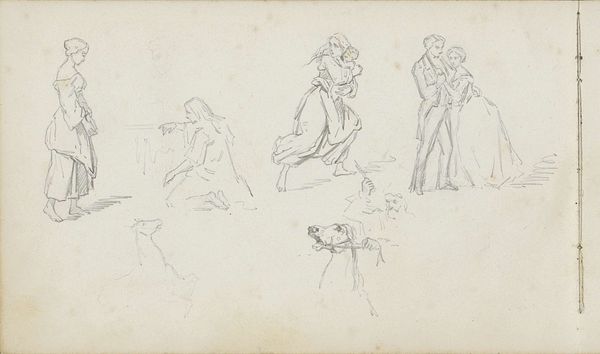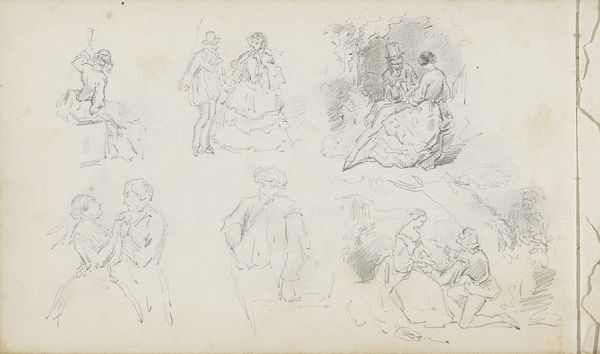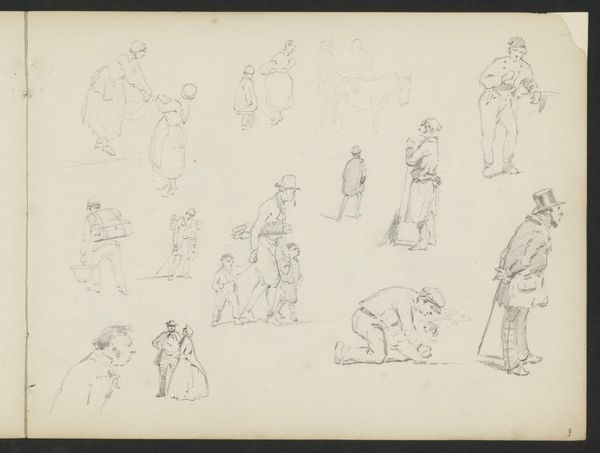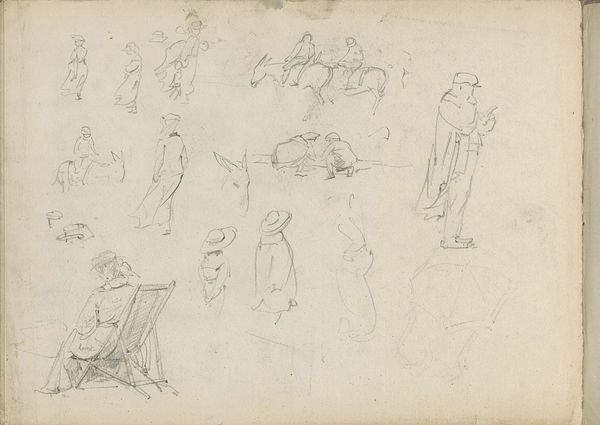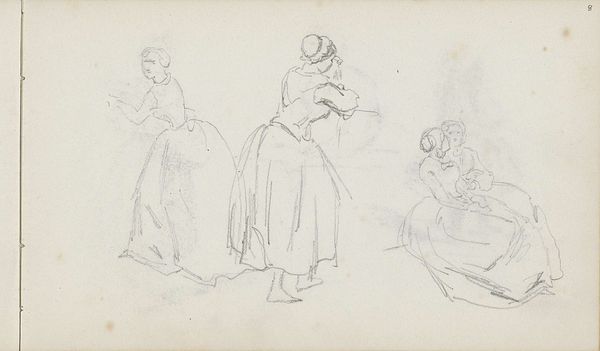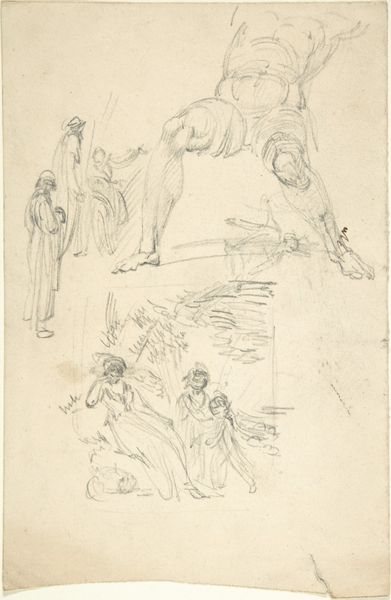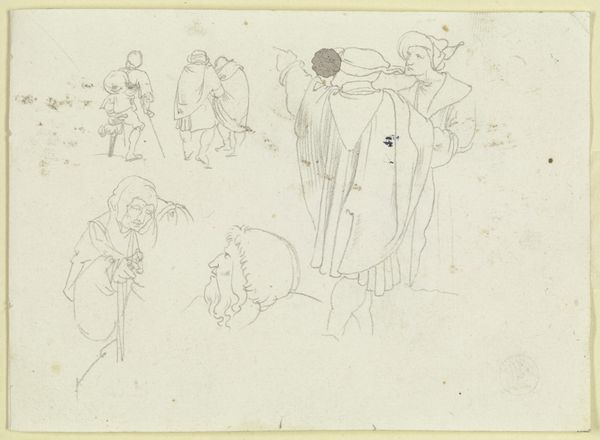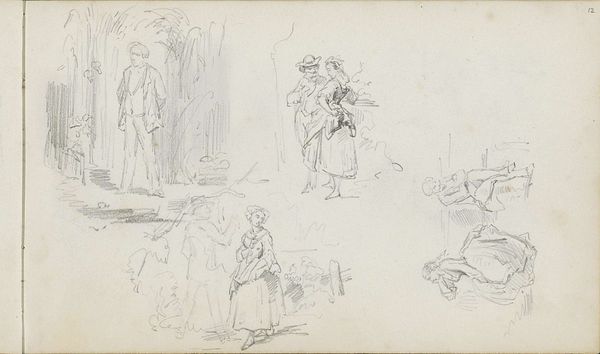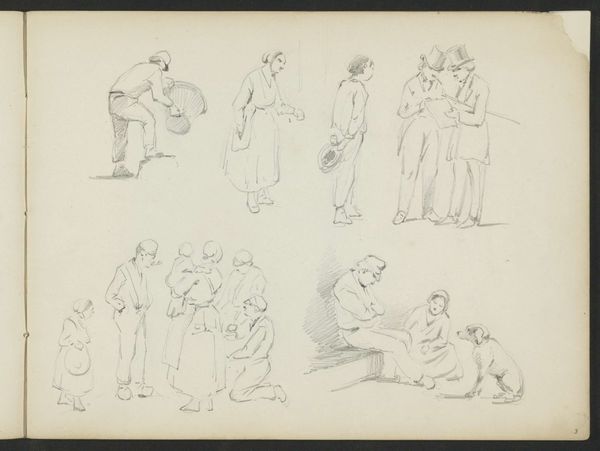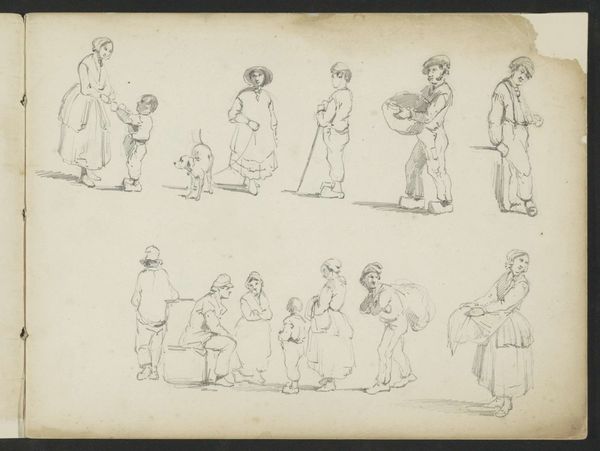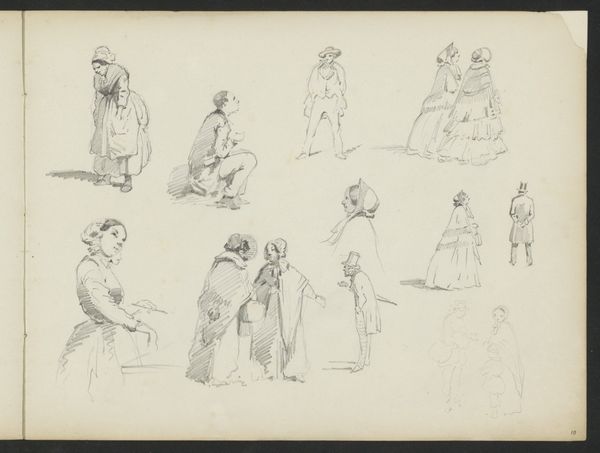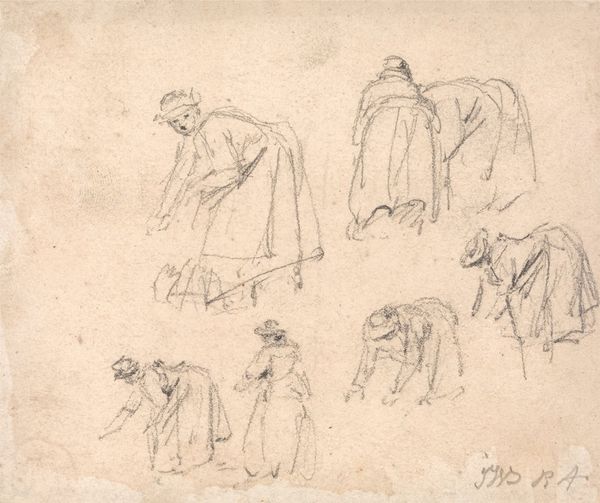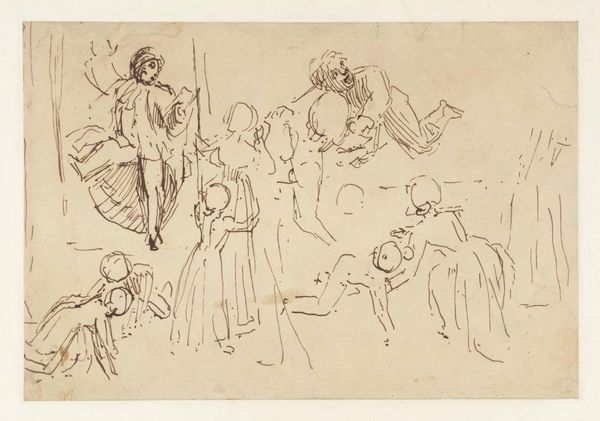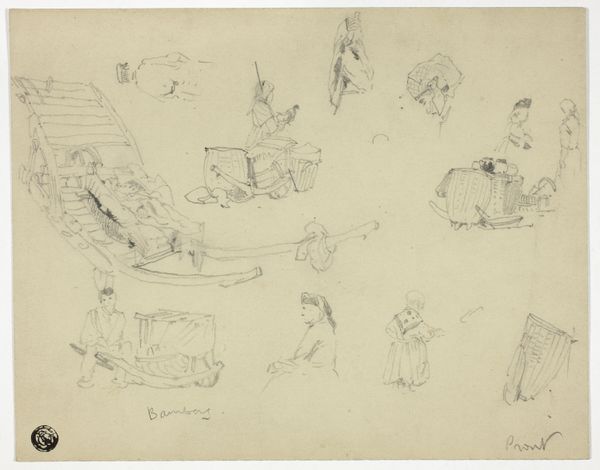
drawing, paper, pencil
#
portrait
#
drawing
#
light pencil work
#
quirky sketch
#
dog
#
sketch book
#
landscape
#
figuration
#
paper
#
personal sketchbook
#
idea generation sketch
#
sketchwork
#
ink drawing experimentation
#
pencil
#
sketchbook drawing
#
genre-painting
#
storyboard and sketchbook work
#
sketchbook art
#
realism
Copyright: Rijks Museum: Open Domain
Editor: Here we have Charles Rochussen's "Studieblad met honden, ruiters en figuren," dating from about 1840 to 1860. It’s a pencil drawing on paper. It reminds me of pages from a personal sketchbook—ideas in their rawest form. What do you see in this piece? Curator: It is compelling how Rochussen utilized the blank space to create individual studies. Notice the repetition of line, and how that affects rhythm. The groupings aren't random; they are deliberately placed. Observe the areas of darker shading; they give weight to the standing woman's figure and create the grounding from which all else in the composition radiates. Editor: I hadn't considered the relationship between the shading and overall weight. What does the artist achieve by using just line instead of shading in the other sketches? Curator: Line isolates form, showcasing the pure shape of objects. This creates a visual hierarchy. Our eyes trace those heavier lines. Rochussen seems to explore variations in depiction. Look how that sharper focus brings a different kind of energy. Note the contrast in the texture of the shading compared with that defined by the lines that give each shape a clear contour. How do you perceive that tension? Editor: It feels almost like two artists were exploring one surface! Now I see the deliberate act of contrasting rendering styles within a single plane. Curator: Precisely. This drawing is not merely a collection of studies; it's an examination of contrasting pictorial possibilities through form, shape, and texture. Editor: Thank you; I'm rethinking what I initially perceived to be a random assortment of sketches. Now I appreciate how Rochussen explores these relationships between various styles of representation. Curator: Indeed; hopefully you see that sometimes the most casual drawings reveal the most complex intentions and ideas about the formal and stylistic issues facing an artist at any given moment in time.
Comments
No comments
Be the first to comment and join the conversation on the ultimate creative platform.
